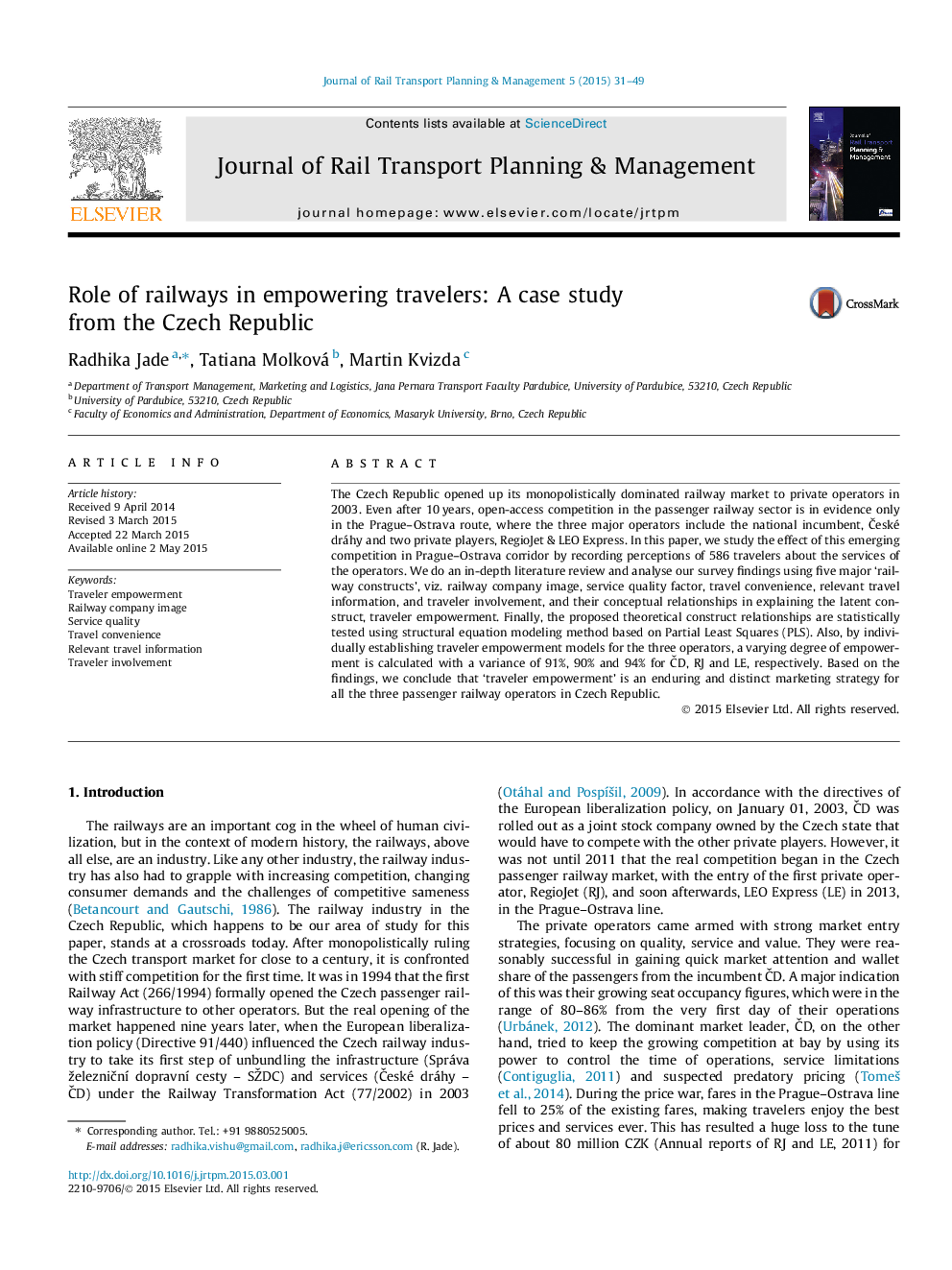| Article ID | Journal | Published Year | Pages | File Type |
|---|---|---|---|---|
| 286422 | Journal of Rail Transport Planning & Management | 2015 | 19 Pages |
•The study presents traveler empowerment as an enduring marketing strategy for passenger railway operators in the Czech Republic.•To identify major ‘railway constructs’ that result in the subjective experience of empowerment among the travelers.•To test the ‘traveler empowerment model’ quantitatively.•To provide unique and enduring marketing strategies to Czech railway operators based on their unique selling propositions (USPs).
The Czech Republic opened up its monopolistically dominated railway market to private operators in 2003. Even after 10 years, open-access competition in the passenger railway sector is in evidence only in the Prague–Ostrava route, where the three major operators include the national incumbent, České dráhy and two private players, RegioJet & LEO Express. In this paper, we study the effect of this emerging competition in Prague–Ostrava corridor by recording perceptions of 586 travelers about the services of the operators. We do an in-depth literature review and analyse our survey findings using five major ‘railway constructs’, viz. railway company image, service quality factor, travel convenience, relevant travel information, and traveler involvement, and their conceptual relationships in explaining the latent construct, traveler empowerment. Finally, the proposed theoretical construct relationships are statistically tested using structural equation modeling method based on Partial Least Squares (PLS). Also, by individually establishing traveler empowerment models for the three operators, a varying degree of empowerment is calculated with a variance of 91%, 90% and 94% for ČD, RJ and LE, respectively. Based on the findings, we conclude that ‘traveler empowerment’ is an enduring and distinct marketing strategy for all the three passenger railway operators in Czech Republic.
